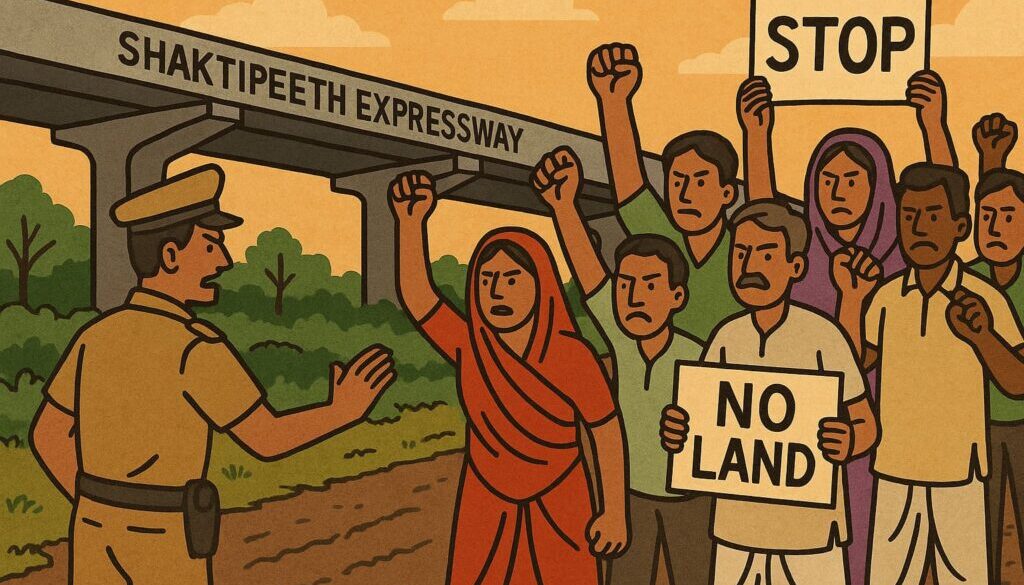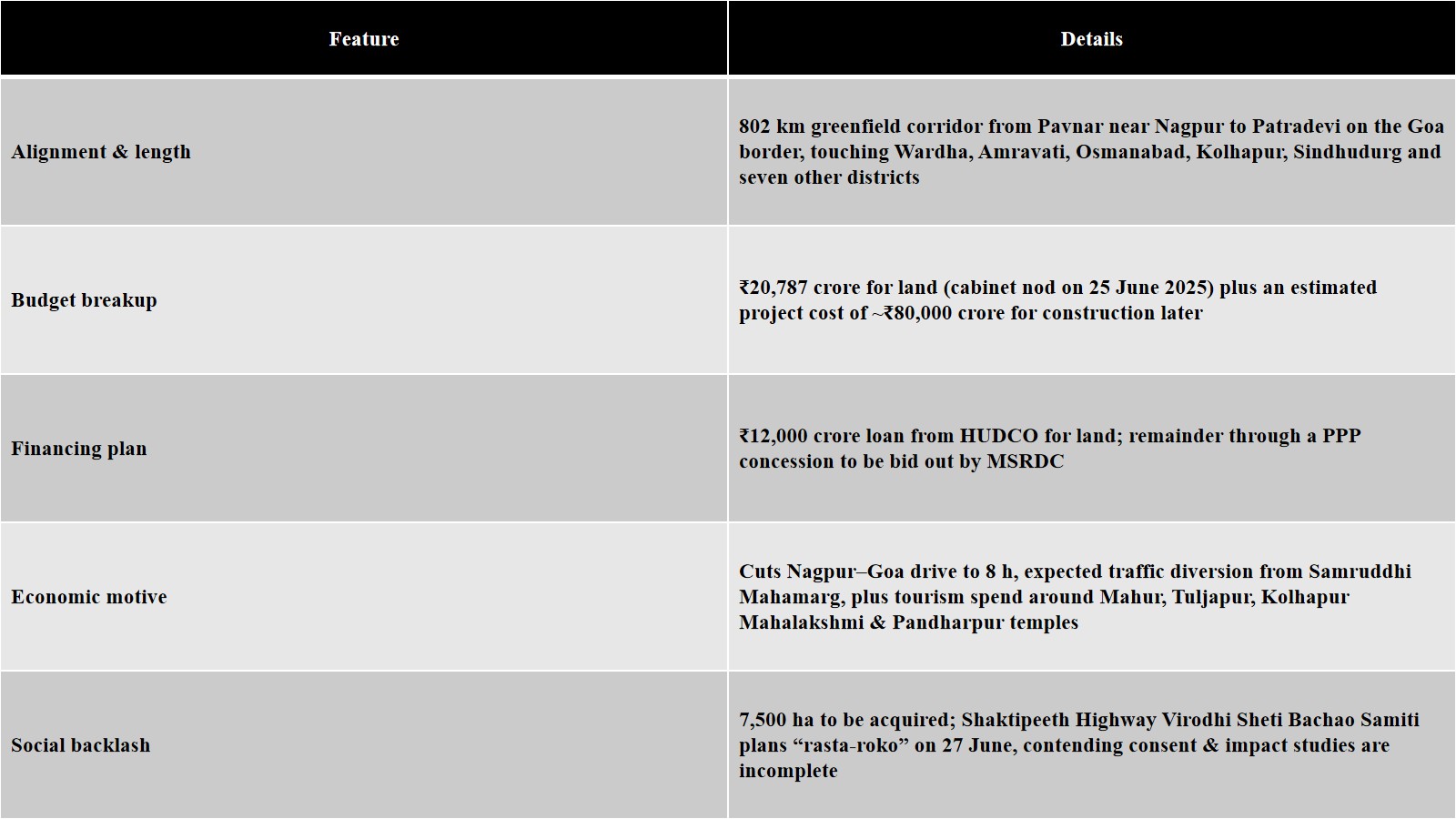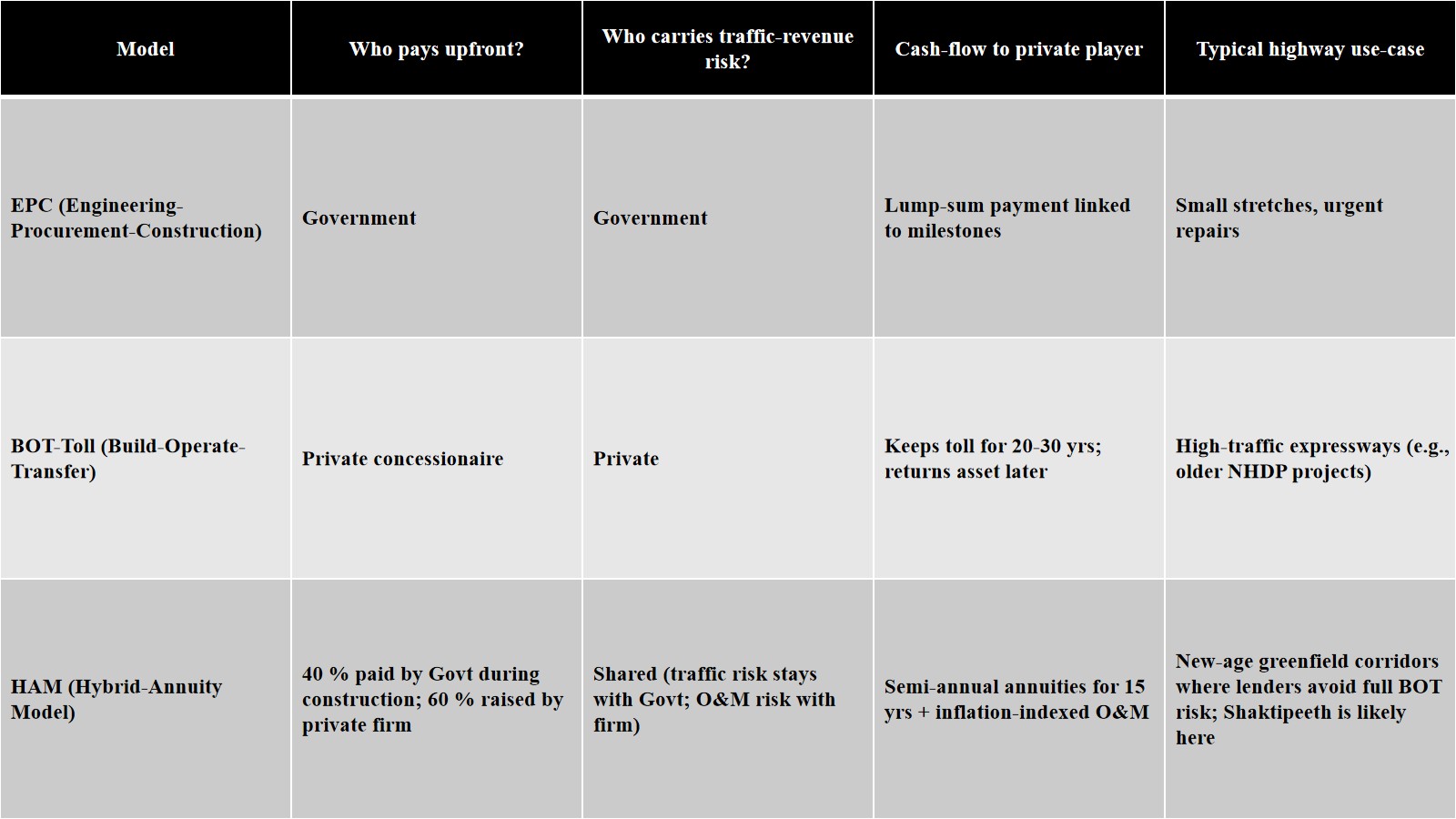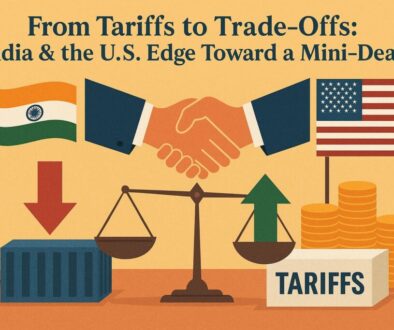₹20,787-crore Shaktipeeth Expressway and farmer resistance — land acquisition, faith tourism, federal finances
The proposed ₹20,787-crore, 802 km Nagpur–Goa “Shaktipeeth Expressway” aims to stitch together twelve districts and a string of famous goddess temples (Shakti peeths) in Maharashtra, shrinking the road trip from about 18 hours to eight. The cabinet has just cleared a massive land-acquisition package, backed by a ₹12,000-crore HUDCO loan, but thousands of farmers have announced highway blockades, alleging hurried notices and low transparency. To understand the friction — and why such religious-corridor projects keep returning to the headlines — we need four static pillars of UPSC polity-economy syllabus: (1) the 2013 Land-Acquisition law, (2) PPP delivery models & Viability-Gap Funding, (3) 15th Finance Commission rules that cap state debt, and (4) the idea of “faith tourism” as a cultural-economy lever. Each is unpacked below in plain language.
What exactly is the Shaktipeeth Expressway and why the protests?
Why the flash-point?
Landowners argue that acquisition notices arrived before the legally mandated Social Impact Assessment and public hearing were exhausted — rights granted under the 2013 Act (see next section). They also fear a repeat of Samruddhi Mahamarg’s relocation disputes, hence the upsurge in dharnas and court petitions.
The Right to Fair Compensation & Transparency in Land Acquisition Act, 2013 (RFCTLARR)
-
Four-fold rural, two-fold urban compensation over market value, to counter undervaluation in sale deeds
-
Consent clause: 80 % of affected families must sign when land is acquired for a private project; 70 % if it is a Public-Private Partnership
-
Social Impact Assessment (SIA): a gram-sabha-level survey that maps livelihoods and must be published on a public portal; acquisition lapses if not completed in five years.
-
Resettlement Package: one-time allowance, employment or annuity, housing sites, plus a mandatory “rehabilitation committee”.
-
Return of unused land: if the stated public purpose is not fulfilled in five years the land reverts to original owners or state land bank.
-
Transparency tools: detailed notice periods, mandatory web disclosure, and bar on acquiring multi-crop irrigated land except in “absolute demonstrable last resort”
Implication for Shaktipeeth: 7,500 ha means the SIA, consent canvassing, and “multi-crop” safeguards all come into play; any shortcut invites litigation — exactly what farmer groups are signalling.
Public-Private Partnership (PPP) tool-kit
Viability-Gap Funding (VGF)
When even HAM numbers don’t add up — say, sparse traffic but high social value — the Centre can grant up to 30 % of project cost (and in social sectors up to 40 %) as an upfront capital grant; states may add another 30 %. The scheme runs till FY 2024-25 with a ₹8,100-crore corpus.
Relevance: If toll forecasts on the Nagpur–Sindhudurg segment look weak, MSRDC could bundle VGF to sweeten bids, while keeping fares affordable for pilgrims.
15th Finance Commission guard-rails on state borrowing
-
Borrowing cap: 4 % of GSDP (FY 22), 3.5 % (FY 23) and 3 % (FY 24-26) for each state. Unused headroom can be carried forward within the award period.
-
Extra 0.5 % of GSDP allowed if a state meets power-sector reform milestones.
-
Why it matters: Maharashtra’s ₹12,000-crore HUDCO loan plus any VGF share still counts toward its debt stock; to stay within the glide-path, the state may need to phase draw-downs or package the project so that the private concessionaire shoulders later-stage costs.
Faith tourism & cultural-heritage corridors (GS-I linkages)
-
Definition: Leveraging pilgrimage routes and mythological circuits (Char Dham, Ramayan, Shaktipeeth) to spur rural infrastructure, hospitality jobs and handicraft sales.
-
Policy backing: Swadesh Darshan 2.0 now funds destination master-plans that prioritise local entrepreneurship, environmental carrying capacity and digital visitor-management
-
Economic rationale for Shaktipeeth Expressway
-
Clustering effect: One super-corridor lets tourists cover Mahur → Tuljapur → Kolhapur → Pandharpur → Konkan temples in a single circuit, boosting average spend per trip.
-
Off-season traffic: Beyond pilgrims, the access-controlled road promises agro-logistics gains for Vidarbha and Konkan, diversifying revenue.
-
Cultural preservation: Project DPR must include signage in Marathi/Konkani, craft haats, and wayside amenities — now a funding criterion under Swadesh Darshan.
-
-
UPSC angle: Link GS-I (culture), GS-III (infrastructure), and ethics (development vs. displacement). A balanced answer can cite both economic multipliers and RFCTLARR safeguards.
Key take-aways for quick revision
-
Shaktipeeth Expressway = 802 km, ₹20,787-crore land package, HUDCO loan, farmer consent controversy.
-
RFCTLARR, 2013 enforces SIA, high compensation and 80 % consent for PPP land — core to the protest narrative.
-
PPP models: know the risk-allocation ladder — EPC < HAM < BOT.
-
VGF: up-front grant that rescues socially desirable but financially weak projects.
-
15th FC borrowing limits dictate how states stagger mega-infra loans.
-
Faith-tourism corridors tie infrastructure to cultural economics — an emerging UPSC theme.



